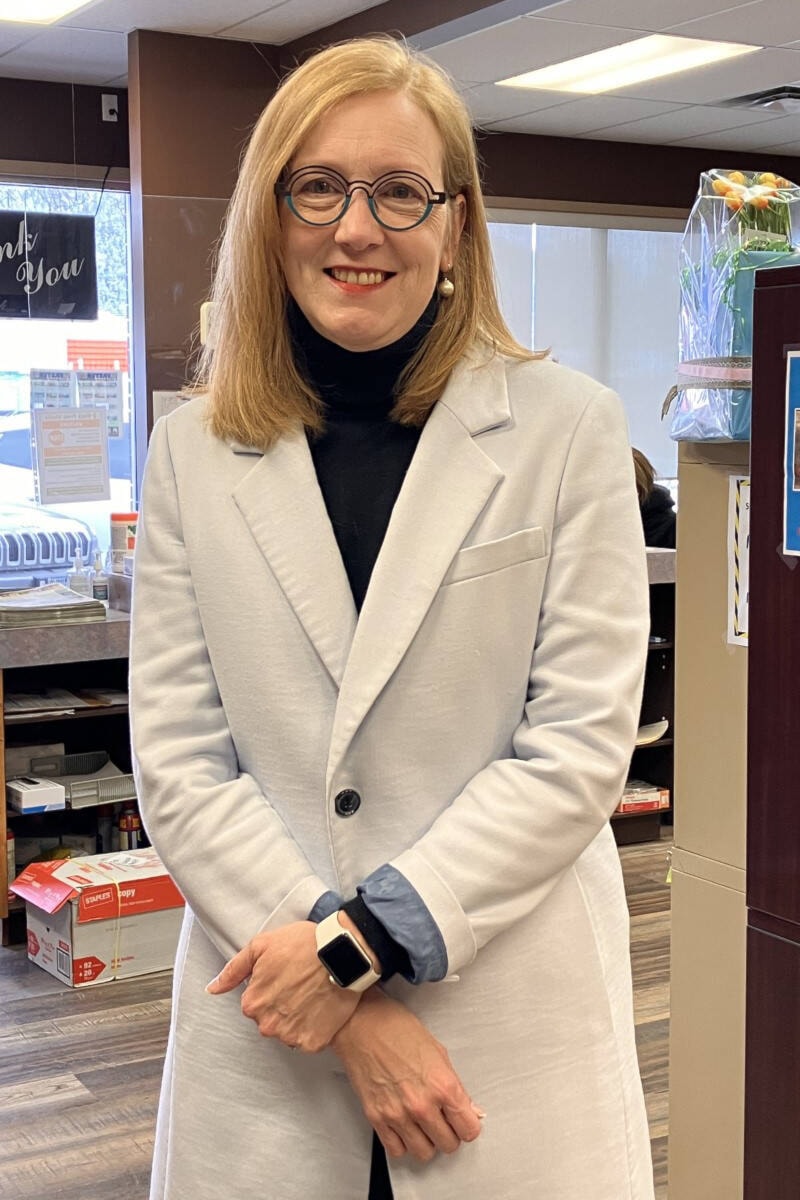Funding for the next intake of the Rural Economic Diversification and Infrastructure Program (REDIP) is jumping to $66 million based on the quality of applications received to date.
Brenda Bailey, minister of jobs, economic development and innovation, was in 100 Mile House on April 12 to engage with local businesses and the Free Press had the opportunity to speak with her.
REDIP is only one option in what she calls a “suite of offerings” designed to spur regional economic development.
There were 267 applications in the first round alone, she said, adding that when you see a response like this you do not want to cut it off, you want to support it, which is why funding was increased for the second round.
“You know, if we’d had a ton of applications but they weren’t at a really high level then we would just take the top ones and call it a day,” she said. “But the reality was the applications were really strong and we know the need is real.”
To date, 20 projects have been funded in the Cariboo for a total of $6.1 million since the start of the program in November 2022.
One of the reasons the program is successful is that the requirements for deciding where the money is spent are more flexible. It is the communities who understand the needs of their unique situations, said Bailey.
“Sitting in Victoria how would we know?” she said. “So we want to do this correctly. That’s why it’s important that it’s folks who live in those communities that are making those decisions as to what should be funded.”
She noted that in the second intake, those applications that were of high quality but not quite at the level of those that got funded would be moved along. Applicants can “tweak” them but will not be required to go through the whole process again.
One advantage applicants have in the second intake is that they can see the types of projects that were approved for funding already. “You can look through it and say, oh gosh, that might work in my community,” said Bailey.
A second way the government is trying to provide funding for regional economic development is through the Manufacturing Jobs fund.
The $180 million fund is for the private sector, unlike REDIP, which is for non-profit, local government and First Nations government.
“It’s a manufacturing fund but it is about creating high quality, high paying jobs through long-term development in the community. A region is healthy if you can live and work in your region and support your family, which is the goal of this fund,” she said.
The program will focus on bringing value-added lines into forestry. “Some people are using it to move into mass timber, or to retool forestry lines that are designed for old growth but now they’re processing smaller logs. That equipment’s expensive,” said Bailey. “You can use it to help fund the retooling for that.
Any manufacturing business can apply and get up to 20 per cent of its project up to a maximum of $10 million. The program opened to the public on Feb. 28 and has a rolling application process.
The third funding model centres around infrastructure.
The Minister of Municipal Affairs took a $1 billion surplus she was allotted and shared it between each municipality and regional district in B.C. The Cariboo Regional District received $3.9 million and the District of 100 Mile House was given $1.265 million.
“Infrastructure is tricky because when you have a growing population, infrastructure gets expensive because you have to keep up with growth,” said Bailey. “When you have a shrinking population, infrastructure is expensive because you don’t have the tax base to fund infrastructure.”
Bailey said the need for infrastructure is very strong and that is what this money is for.
More information on these and other programs can be found at https://strongerbc.gov.bc.ca/plan/.
fiona.grisswell@100milefreepress.net
Like us on Facebook and follow us on Twitter
